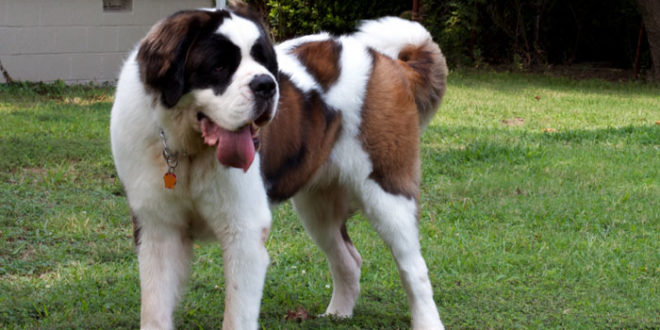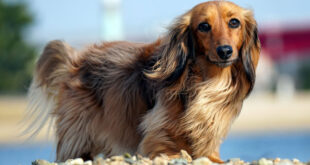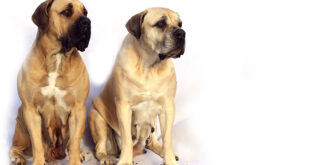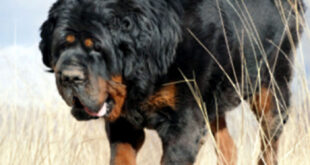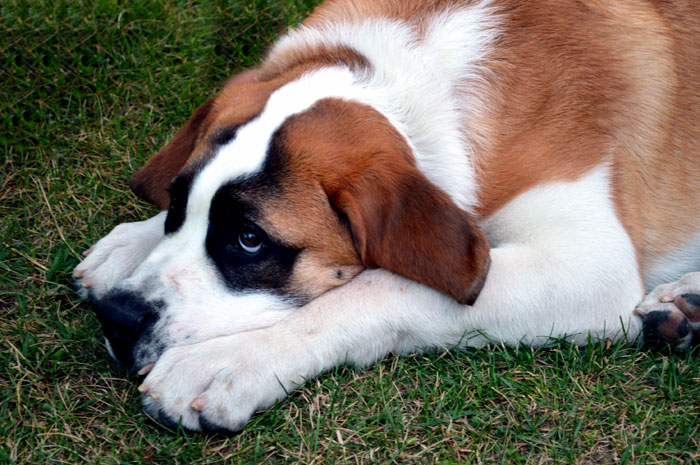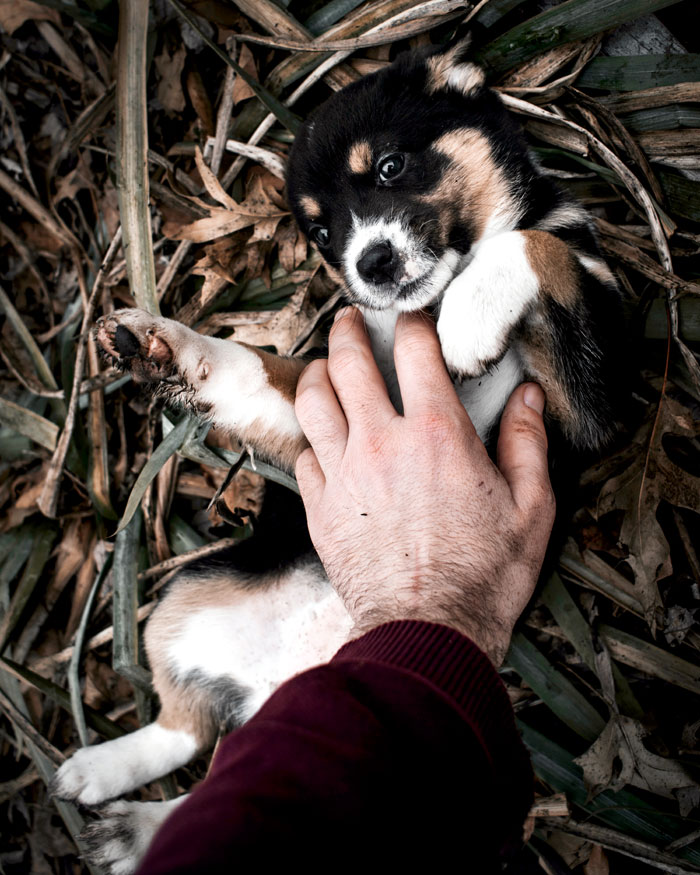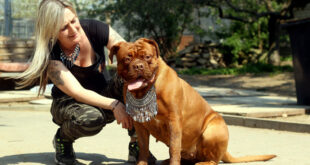Saint Bernard
Saint Bernard is a giant breed of dog but, which is very strong and muscular. This breed is almost never aggressive. They have a massive head. There is a proportion between height and weight as long the height increased weight is also increased. This breed is quite is an indoor dog, gentle, intelligent dog. This dog average height is 30 inch and weight is 180 pounds. This breed comes with two coat long-haired and short-haired coat, the short-haired coat is preferred by monks of St. Bernard hospice where the Saint Bernard breed is originated. Generally, this breed less aggressive but they bark when there is any suspicious activity, cause, or they out of their protective instinct.
Origin
Saint Bernard is a breed of Valery large working dog of Western Alps in Italy and Switzerland. They were originally bred for rescue by the Hospice of the St. Bernard passes on the Italian-Swiss border. Saint Bernard would find lost travelers, lick them, and lie near them to warm them. These breeds are trained that they are able to predict avalanches and storms because of their ability to hear a low-frequency sound. St. Bernard breed was extinct at 1830 because monks tried to interbreed the dogs which cause several diseases. After this to stop the several diseases they breed Bernard with Great Pyrenees, Great Dane which resulted in a modern Saint Bernard which we see nowadays.
Size
Male Saint Bernard height is up to 26 – 28 Inch and weight are 140 – 180 pounds. Female 26 – 28 inches and weight are 120 – 140 pounds.
Health
Generally, this breed is healthy, not all saints having a disease but we have to take precautions.
Saint Bernard Health Problems
Cardiovascular disease:
Cardiovascular disease is a major problem in St. Bernard’s Dogs (especially cardiomyopathy and tricuspid valve disease).
Musculoskeletal problems:
These diseases are their second major problem. Hip Dysplasia, Elbow Dysplasia, Cruciate Ligament, Panosteitis, Osteochondritis, Wobble Syndrome, etc. can be affected at any time.
Neurological problems:
Epilepsy trips are a matter of concern for this, especially on this dog.
Gastrointestinal diseases:
These diseases also trouble from time to time. Gastric dilation-volvulus Race tendency.
Eye diseases:
Common problems like eye disease, eyelid abnormalities (Entropion and ectropion), Cherry Eye, Cataract, and eyelash abnormalities.
Cancer Disease:
Many saints affect Bernard’s life, especially osteosarcoma and lymphosarcoma. Read more.
Saint Bernard grooming
Coat
Saint Bernard comes in two coats and both coats need moderate care and a good bit of time. When you groom your St. Bernard you need to do brush (at least 3 – 4 times in a week). Bathing is needed occasionally because it removes all the water-resistant oil from the coat. Bathing these huge dogs is quite difficult unless the owner has a big walk-in shower. This dog breed should be bathed in the garden usually in summer and on winter indoor is best. Always use canine shampoo (for long-haired use conditioner too for a better quality of coat if desired). If you choose long-haired Bernard then they need to be shaved in 2 – 3 months to make dog coat maintenance free and to keep cool in hot weather.
Teeth
This breed requires regular brushing of teeth (2 – 3 times in a week) to prevent tartar buildup and bad breath. Always use canine toothpaste (don’t use normal paste it’s harmful to dogs).
Ears
Check Saint Bernard’s ears regularly to prevent dirt and debris (grass and twigs). Clean the area with cotton and use a cleanser. Don’t get the ears wet during bathing because it causes an ear infection. If there is yellowish discharge and foul odor then visit the veterinarian.
Tear Stains
Saint Bernard is prone to watery eyes it should be clean 3 – 4 times in a week to prevent tear stains. You should use tear stain remover (easily available on pet store) which suitable for all breeds. It gently removes tear stains and debris from under your pet’s eyes.
Nails
You don’t want to take tension about nails because it automatically trims when they run or walk on a hard surface. You can clip the nails with a standard nail clipper (don’t clip them too short because it is vain under it by clipping them short make it bleed and painful.
Saint Bernard Diet
Saint Bernard pups (1 – 3 months) diet is simple just you have to give dog food (additional you can give little curd in a day) 3 times in a day, make sure it is not more than 1/3 cups meal per day.
Diet for pups (3 – 6 months)diet is simple just you have to give dog food 3 times in a day, contain eggs, boiled vegetables, bread, milk, etc. The quantity is 1/3 meals per day.
Diet for above (6 – 12 months), Above 6 months puppy start getting maturity, Now at this stage, you have to feed them 2 times in a day. You have to add a rich protein diet such as lean meat, eggs, liver, red meat bones, boiled green vegetables, bananas, etc. The amount of food is 3/4 meals per day. Give some chewing bones for establishing wide jaws of your dog, it acts as a snack.
Note:- Totally remove the grain food from his diet.
Diet Plan for adult St. Bernard dogs (1 – 8 years), Above 1-year dog, become fully mature, Now at this stage, you have to feed them in 2 times in a day. It includes lean meat, eggs, fruits, boiled vegetables, etc. The quantity of food should be half cups.
(Above 8 years) diet include boiled chicken, eggs, vegetables, fruits like banana, etc. Quantity that you can feed your dog 1 cups just twice a day.
